Coping with COVID-19 and its Economic and Emotional Impact
Lease Restructurings, Modifications & Workouts
This outline is designed to provide a comprehensive overview of the most important and negotiable aspects of navigating the various methods and mindsets, and to understand and properly manage the expectations of both a landlord and tenant, pertaining to a tenant’s request for a rent reduction, deferral or outright forgiveness of rent, or suspension of their non-monetary covenants under a lease.
Updated: March 24, 2020
I. Introduction to Potential Asks of Landlords and Tenants
-
- Reduction in rent.
- Deferral of rent.
- Forgiveness of rent.
- Reduction in contribution to common area or triple net expenses.
- Landlord’s contribution to improvements to the premises.
- Capital or cosmetic improvements to the property.
- Landlord’s completion of any deferred maintenance.
- Reduction, elimination or implementation of the securitization and/or personal guarantee of the lease.
- Increasing the lease term and/or lease option periods.
- Early exercise of existing renewal option or forfeiture thereof.
- Reduction of the remaining lease term.
- Increasing or decreasing the size of the leased premises.
- Relocation of the premises to a less desirable location in a shopping center or office building.
- More favorable terms related to the possible future sale of a business that is located in the premises.
- Landlord termination rights (where none previously existed).
- Relinquishment or modification of negotiated rights such as exclusivity and co-tenancy.
- Adding a 1 to 3 year “lock out period” to a good guy guaranty (“GGG”), effectively converting the GGG to a straight guaranty in the short term.
- Increasing the notice period under a GGG by an additional 2 to 6 months.
- Requiring a personal GGG “on steroids” when none previously existed.
- Inserting additional “legal and business steroids” into a GGG.
- Broadening the “USE” clause in a lease (i.e., to allow restaurants to act as mini-convenience grocery stores).
Updated: March 25, 2020
II. The Negotiating Mindset, Landscape and Philosophy
A. Restructuring of a Lease
-
- Restructuring generally occurs when a tenant is proactive and approaches its landlord for a reduction in rent or some other type of concession relative to the terms contained in its lease.
- The process thereafter is one of give and take on both sides and – if all goes as planned – one where the perfect negotiation occurs; namely, where both parties walk away from the negotiations both a little happy and a little sad.
- The best approach to lease modifications is to employ the mindset of “if you want a little, you have to give a little.”
- One particular retailer with several hundred stores took an extremely aggressive approach after the economic downturn in 2008 by unilaterally advising all of their landlords in a letter that they would be taking a 25% reduction in base rent going forward, accompanied by a check with the reduced rent. While the reactions by the landlords ranged from “okay” to “can’t do 25% but 10% is okay” to “okay, but it will have to be paid back in the future” to “no way, we’ll sue,” ultimately, tenant obtained the financial assistance it needed from its landlords to weather the storm.
B. Restructuring of a Lease
-
- When dealing with a request for rental relief, one needs to put his or herself in the shoes of the person sitting on the other side of the bargaining table.
- Some tenants feel that because they perceive the world and their business as going to “hell in a bucket,” that the landlord should unequivocally grant them rental relief … but that is not the way it works.
- Tenants must not lose sight of the fact that the landlord possesses a signed lease wherein the tenant has agreed for a term of years to numerous monetary and non-monetary obligations.
- Conversely, landlords need rent paying tenants, and thus many recognize that they need to “play nice in the sandbox” with their tenants when confronted with a request for a rent concession.
- Both parties need to be honest, transparent and prepared!
C. Conclusion
-
- When asking for a short or long-term “lifeline” from a landlord, tenants need to be armed and ready with not only a convincing “tale of woe” and a sensible solution to get them through their challenging times, but with clear and written authoritative documentation in support of their request. Put another way, tenants need to empower their landlord to make an informed and knowledgeable decision in response to the requested lease concession.
Updated: March 25, 2020
III. Documentation to Provide a Landlord in Support of the Tenant’s Request for Rental Relief
A. Points of Discussion
-
- A key element of lease restructuring requires the preparation of authoritative documents to formulate the tenant’s rental relief game plan and to help the tenant “tell the story” to its landlord when it approaches the subject of revising lease terms.
- A landlord needs as much information as possible to properly evaluate when a tenant is entitled to a short or long-term rent reduction, a deferral, or whatever other relief they may be requesting.
Landlord Mindset – Knowledge is Key: Collect as many “authoritative” documents from the tenant to enable your team to verify your tenant’s (and their principal’s, as applicable) financial standing.
B. Examples of documents that need to be supplied by the tenant and thereafter reviewed include:
-
- Tenant’s tax returns (past few years)
- Historic financial statements (both for the named tenant and its principal(s))
- Year-to-date and comparative profit/loss statements
- Future projections of income/expense
- In the case of retail stores, daily sales logs (current year and the past 2 years). If a deal is made, landlord should consider continuing to collect daily or weekly sales logs.
- Payroll tax returns (current year and the past 2 years)
- Any other writings in support of a tenant’s request for relief (for example: industry wide problems germane to the tenant’s business, a dearth of potential subtenants, loss of major clients, loss of credit facilities and applications for disaster financial relief)
C. The “Silver Lining”
-
- If the tenant has evidence of declining sales, layoffs, rising utility costs, loss of credit facilities and, in general, a somewhat dire situation (hopefully for just the short-term), at the very least their “story” will be one that most landlords will listen to and thereafter poder.
When the foregoing documents are presented to a landlord along with a term sheet outlining the relief requested and the corresponding tradeoffs the tenants might be willing to give to the landlord, the tenant has laid the proper foundation to negotiate some sort of relief.- Put another way, when authoritative in nature, the declining numbers the tenant presents to the landlord don’t lie, and as strange as it may sound, they are actually the tenant’s ally in its request for rental relief.
- If the tenant has evidence of declining sales, layoffs, rising utility costs, loss of credit facilities and, in general, a somewhat dire situation (hopefully for just the short-term), at the very least their “story” will be one that most landlords will listen to and thereafter poder.
Updated: March 25, 2020
IV. Factors Landlords Take into Account when Confronted with a Rental Relief Request
Many landlords recognize that secure and stable cash flow – although possibly in an amount less than they might otherwise prefer – is truly a good thing. Indeed, a large percentage of something is better than 100% of the nothing that comes with a soon-to-be vacant space, courtesy of a tenant in distress.
A. Points of Discussion
-
- A key element of lease restructuring requires the preparation of authoritative documents to formulate the tenant’s rental relief game plan and to help the tenant “tell the story” to its landlord when it approaches the subject of revising lease terms.
- A landlord needs as much information as possible to properly evaluate when a tenant is entitled to a short or long-term rent reduction, a deferral, or whatever other relief they may be requesting.
Landlord’s Mindset: Each situation is different and should be treated on a case-by-case basis. What are the short term vs long term implications of the tenant going out of business vs. sharing in the pain with the tenant and providing some type of rental relief?
-
- “The devil you know is better than the devil you don’t know.” (The point: If a landlord has a tenant who he or she generally never hears from except for when their timely rent payment arrives at or near the beginning of the month, consider finding a mutually beneficial solution to their request for rental relief).
- Is the rental relief requested short-term, for an extended time period or for the remaining lease term?
- Is the landlord constrained by the terms of its mortgage to even grant a rent reduction or other lease modification?
- Given the landlord’s rent roll and expenses for the building, is it in danger or in a comfort zone as to complying with its debt service coverage ratio?
- What is the financial strength of the landlord?
- What is the near and longer term tenant rollover for the building?
- Consideration of rising vacancies and declining rents in virtually all markets. What is the health of the shopping center or building?
- Increased competition from tenants trying to sublet their space at lower costs with potential use of furniture, phone systems and sufficient existing build-outs.
- Is the named tenant merely a shell corporation? What “skin” does the tenant have in the “game” (e.g., a parent, personal or good guy guaranty)?
- In the long term, is the tenant someone the landlord would like to renew its lease?
- What is the type of tenant – is it a mom and pop or a national tenant?
- Does the tenant actually need rental relief, or are they trying to take advantage of the situation?
- Is the tenant currently in default of their lease?
- What exactly is the tenant asking for (is the tenant asking to waive rent or defer rent)?
- What is the tenant going to use the rent relief for?
- Why does the tenant need the rental relief (is it due to a force majeure event (e.g., hurricane, pandemic, war, etc.))?
- What has the tenant tried besides for asking the landlord for rent relief (did the tenant try creative ways to increase and/or maintain their business or explore government assistance that may be available)?
- For franchisees, did the franchisee reach out to their franchisor for assistance?
B. The Bottom Line
Do (a) the documents, (b) the tenant’s “tale of woe” and (c) the tenant’s game plan for recovery, when evaluated by a landlord in the context of the foregoing factors, support the claimed level of distress and provide the landlord hope that the tenant will weather the storm and prosper in the long run?
Updated: March 27, 2020
V. “The Proposal”
Tell the tale, back it up with supporting documentation, provide the recovery game plan and propose what the tenant will give up in return for rental relief. The proposal to the landlord to throw the tenant a “lifeline” should contain seven (7) honest and concise chapters as follows:
-
- #1 – A basic introduction by the tenant to remind the landlord that the tenancy has historically been a mutually beneficial one.
- #2 – “The Tale of Woe”: Tell your story to the landlord, and do not be afraid to convey it from a personal, business and professional perspective.
- #3 – The authoritative written documentation in support of the tenant’s temporary short-term distress.
- #4 – The tenant’s game plan for recovery. (Note: Tenants walk a fine line here – a landlord need their tenants to back up their request for rental relief with (a semblance of) substance, and with far more than a mere “if there is life there is hope” proposition. Ideally, the game plan will give the landlord comfort that the tenant will weather the storm and live up to its lease obligations once that storm has passed).
- #5 – The “Plea for Rental Relief”: The request needs to be rooted in reality. The tenant needs to be realistic in the context of not only its own box of financial constraints, but those of the landlord as well. Now is the time to step up and tell the landlord exactly what the tenant is looking for.
Examples:
-
- A 25% reduction in rent in the form of a deferral, or an outright forgiveness of rent?
- A free month or 3 months’ of free rent?
- An offer to extend the lease in exchange for a reduction in the current higher rent to the current market rate?
- A request to take back a portion of the space or move to a smaller/less desirable location in the building that now fits the tenant’s downsized business?
- Apply a portion or all of the security deposit to the rent due and with the tenant refilling the security deposit over a period of time with future rent payments.
Landlord’s Mindset: Some landlords will only agree to defer rent as opposed to waiving/forgiving rent. Consider offering creative ways to help the tenant’s business as opposed to agreeing to defer or waive/forgive rent (e.g., adding signage for the tenant, adjusting the CAM provided, additional parking spots for a retail space).
-
- #6 – “Life is a Tradeoff”: Here the tenant must “pony up” and offer to give the landlord what is necessary in order to receive what the tenant is requesting of the landlord.
Examples:
-
- Surrender of a tenant’s security deposit
- Going “personal” for the rent reduction if the tenant fails to comply with the restructuring terms.
- Paying interest on the reduction if it is merely a deferral.
- Giving the landlord a good guy guaranty if one doesn’t currently exist.
- In the case of a retail store, offering to move to a different part of a strip mall to allow the landlord to combine the tenant’s space with an existing vacant space to make it more attractive to lease.
- Staying open for a period of time beyond that which the tenant would otherwise prefer if the landlord does not want the tenant’s high traffic location to “go dark” prior to securing a replacement tenant.
- Landlord having the right to terminate the lease on 3 to 6 months’ notice.
- Relinquishing or modifying certain negotiated rights like exclusivity or co-tenancy.
- Requiring the tenant to exercise a renewal option early.
- See Part I for other examples.
Landlord Mindset: This is an opportunity to strengthen your asset in the long term in consideration of helping out your tenants in the short term. Review your lease for ways you can “put the genie back in the bottle” on certain clauses (e.g., reducing renewal options, narrowing a broad use clause, adjusting exclusive use clauses, adding legal and business steroids to your current straight or good guy guarantees (or converting a good guy guaranty into a straight personal guaranty)).
-
- #7 – The “Up Close & Personal”: This is the time for the tenant to convey the message that, in the words of The Beatles – “we can work it out” and “take a sad song and make it better.” Prior to forwarding the proposal to the landlord and requesting a meeting, the tenant and/or his or her representative should call and give the landlord a “head’s up” as to what the tenant is delivering.
Updated: March 27, 2020
VI. Landlord Concerns
-
- Before you provide rent relief to a tenant, make sure your mortgage doesn’t require prior approval by your lender.
- Make sure to document everything with the tenant in writing.
- Enter into a lease amendment reflecting the agreement with the tenant.
- Write down when the tenant is open for business and when the tenant closes the business (if applicable).
- Secure as much information as possible regarding your situation, and that of the tenant’s and its principal’s financial situation, before making a decision regarding providing rental relief to a tenant.
- Consider other forms of assistance that may be available to the tenant.
- How long will you take to respond to a tenant’s request for rent relief?
- While you want to collect as much information as possible before making a decision, if you wait too long to respond you may lose the tenant.
- Consider adding a confidentiality clause in the agreement with the tenant providing that the rental relief agreement is void if the tenant shares information about the agreement. While it may or may not be enforceable, it can make the tenant think twice before sharing your agreement with the tenant with other tenants in the shopping center or building.
- Reviewing the insurance policies to see if, although highly unlikely, whether if the business interruption insurance covers the specific cause of the need (i.e., pandemic, virus, etc.).
- Reviewing the lease to see whether the definition of force majeure favors the landlord.
- Whether the government will intervene and dispense with or modify the virus or pandemic exclusions contained in a business interruption insurance policy or force majeure lease provision?
- Having enough “teeth and bite” in your lease modification agreement in the event the tenant is ultimately non-compliant.


